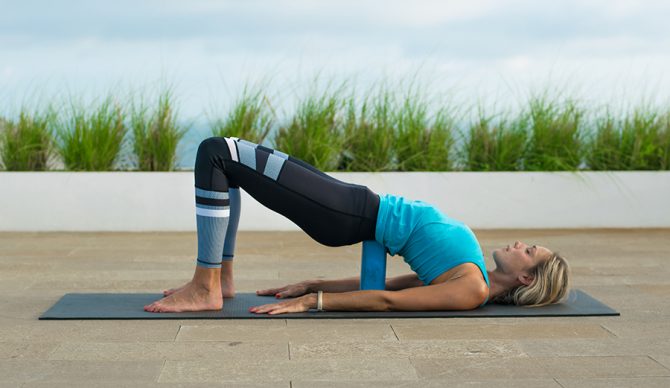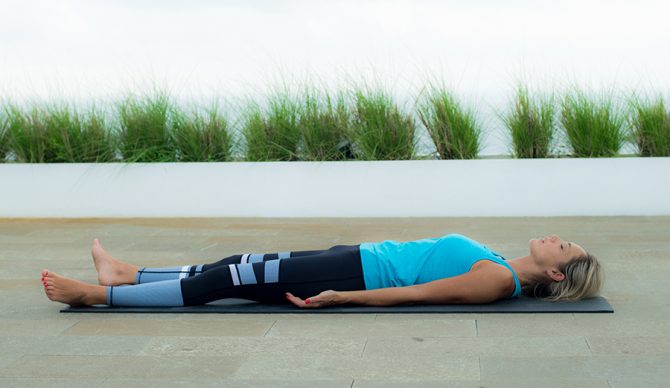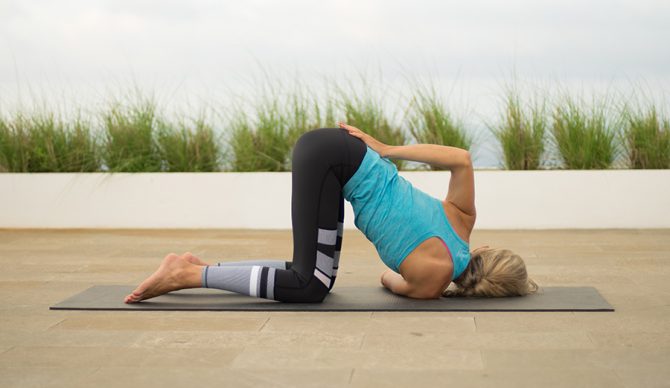
Photo: Paul Baker
If you look up how to relieve neck and shoulder pain online, the results may not be all that helpful. The standard advice ranges from pain medication to physical therapy. In some cases, you might even find recommendations to get surgery. This information is aimed at people who are in a position to stop doing whatever it is that has caused the pain in the first place. You, unfortunately, are not.
Your neck hurts because you surf, and since that’s not something you’re going to stop doing anytime soon your approach needs to be less one of attempting to fix the problem and more a commitment to work with your body to minimize the potentially harmful impact of your sport. Essentially, to stay fit, strong and pain-free, you need to focus on recovery like it’s your job.
How does this apply to neck pain? First, let’s look at what’s causing the pain. In your case, pain is most likely a signal from your body that something is out of balance. Ideally, you’d sit and stand with perfect posture all day long and do activities that stretch, strengthen and mobilize your entire body relatively evenly. Unfortunately, surfing is an inherently unbalanced or asymmetrical activity and that is where most of the problems arise.
In this post, I’m just going to look at how this shows up in the upper body:
-Muscles that are overused (in the arms, shoulders and upper back) and those that are chronically contracted (in the neck and chest) tighten up.
-Tight or shortened muscles pull joints—in this case, in the cervical and thoracic spine and shoulders—out of alignment, placing stress on the supporting musculature.
-Additionally, compression in the neck and upper back may lead to trapped nerves and cause radiating pain, tingling or numbing in other parts of the body.
Muscular pain is an incredibly important message from your body, asking you to look after your neck and shoulders if you want them to stay strong, supple and healthy.
What you can do
There is actually a lot you can do, depending on the amount of time and money you choose to invest in your recovery. Adopt as many of these techniques as you can for the best results, experimenting with what works best for you. There is wide variation in the styles and competency of yoga teachers, physical therapists, trainers, doctors and whoever else you choose to have on your team, so try out different modalities and techniques and get stuck into the incredibly rewarding process of looking after your body.

Photo: Paul Baker
1. Posture
Poor posture will exacerbate your neck pain so it’s vital that you pay close attention to how you sit and stand throughout the day and make improvements where necessary. Your ears, shoulders, hips, and ankles should all be in a straight line. Be careful not to let you head poke forward and your upper back round.
2. Take stretch/mobility breaks
Practice the stretches in my last post several times a day to promote circulation and take you out of your default postural patterns.
3. Warm up and cool down
Even if it’s just for a few minutes before and after you go out for a surf. It’s the smart thing to do if you don’t want to pick up a potentially preventable injury.
It doesn’t have to be yoga, but if you’re tight you need to dedicate at least 15 minutes a day to work on your flexibility and mobility. It will make all the difference to how your body feels.
5. Restorative/Yin Yoga
Hold each of the poses above for a minimum of 3 minutes. Use as many blocks and cushions as you need so that you can completely relax. Deepen your breath, find your edge and stay as still as you can. Practice these poses in the evening as you wind down for bed and not before surfing. Email me abi@yoga15.com if you have any questions about the poses.
6. Massage or other manual therapy
Every week, I get a massage, acupressure, acupuncture, physio, Feldenkrais, some type of manual therapy. Nothing beats having a professional work on your tight spots. As an athlete, you need to accept this as an ongoing part of your training.
7. Self-myofascial release
Manual therapies can be expensive but stretching and lacrosse ball work is essentially free. For neck pain, use the ball to release tension in the chest, upper back and between the shoulder blades.
8. Sauna and ice baths
I’m addicted to heat and ice therapy. My record is 44 minutes on the ice. But then again, I live in Bali where that’s a lot more appealing than in colder surf spots.
9.Anti-inflammatory diet
Eat an abundance of fruits, vegetables, healthy fats, fish, meat, and eggs (if your diet permits), and avoid processed foods and refined sugars. Eat masses of turmeric for bonus points.

Photo: Paul Baker
Final thoughts
The two main points I want you to take away from this article are that firstly, looking after your body needs to be an ongoing part of your training so you might as well start getting into it and enjoying the process. What’s not to love about getting a massage or going to yoga classes where they hand you pillows and blankets when you walk in the door? It’s undoubtedly going to require an investment of your time and money but at some stage, you have to get clear about what is most important in your life. Surfing into your golden years, agile and pain-free? Every year, becoming better and better so you can show off your skills to the new kids coming through?
Secondly, we have a tendency to want to fix things so we can tick them off the list. Unfortunately, this is not how your body works. There is always going to be a constant interplay between stress and recovery and if you neglect the second part of this equation, you risk burning out or injuring yourself.
You can find a full series of 15-minute yoga videos designed for surfers here. And follow me on Instagram for recovery inspiration and motivation.

